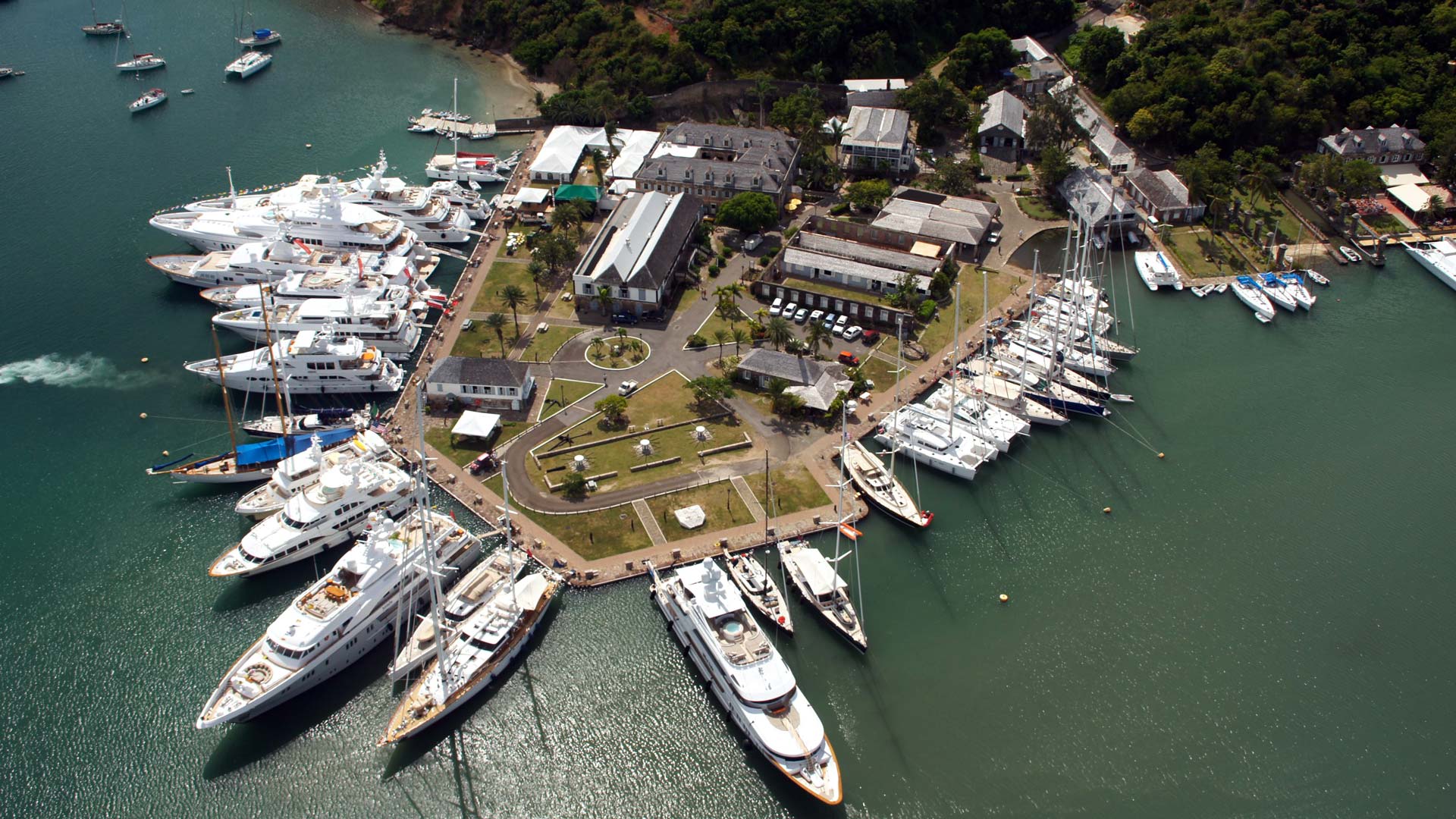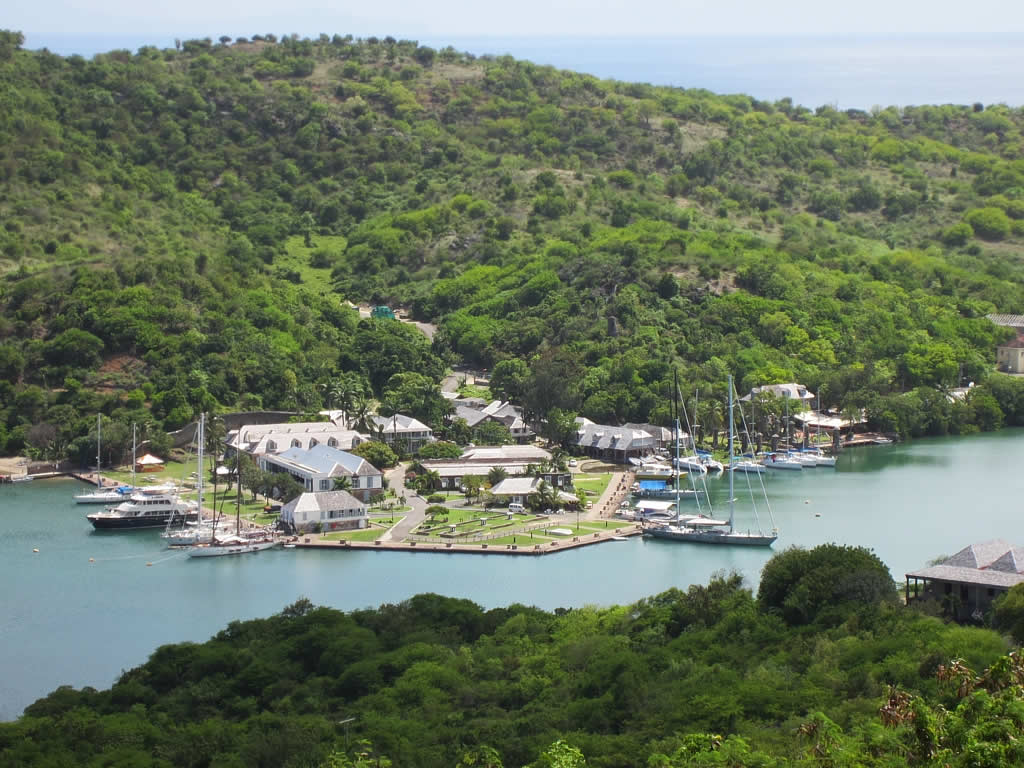
Nelsons Dockyard National Park
This working Georgian era naval dockyard is set in some of the most picturesque scenery found anywhere. Inscribed as a World Heritage Site in 2016 as the “Antigua Naval Dockyard and Related Archaeological Sites”, the Park is a unique combination of history, heritage, and environment with scenic beauty, beaches and sailing. Learn, explore, hike, sail, swim, dine: Experience It. The Dockyard has it all.

Why "Nelson's Dockyard"?

History
The unique naval history of English Harbour begins in 1725 when the sugar planters offered the harbour to the British Crown “for the use of the Ships of war and that it be paid for it by the public,” of Antigua. The planters believed that the Navy would gratefully accept this gift, send more warships, invest in more buildings and infrastructure, thereby providing the island with a greater military presence.
Comprehensive cover
Unfortunately for the planters, the Royal Navy only used English Harbour occasionally between 1725 and 1740, refusing to put any money into the station. The government found themselves having to pay for the upkeep, much to their dismay. The first actual infrastructure went in at St. Helena, on a piece of land opposite the Antigua Naval Dockyard today.
In the 1740s the French in nearby Guadeloupe and Martinique fitted out hundreds of privateers to attack the British trade around Antigua and the wider Caribbean. The Royal Navy started to rely more on the Dockyard at English Harbour. The neglected St. Helena was not large enough, and construction on the historic Antigua Naval Dockyard started.
To help with the construction, 130 enslaved Africans were forced by the colonial government to provide the necessary labour. Without the labour of the enslaved, the buildings of the Dockyard and the successes of the Royal Navy in the Caribbean would have not happened. Historically, more than 75% of the workers in the Dockyard were enslaved Africans, including shipwrights, blacksmiths, carpenters, caulkers, and sailmakers.
The Antigua Naval Dockyard grew in size during the 18th century as wars continued between Britain and France. In its heyday, the Dockyard supported hundreds of workers and logged thousands of hours keeping the Royal Navy afloat. By the 1760s, the Royal Navy fully accepted the facilities offered to them in 1725, finally letting the colonial government off the financial hook. But, as a price, the Royal Navy not only fought the French and protected the legal trade around the island, but also engaged in prohibiting smuggler activity, most of whom were supported by the local planters.
This caused all sorts of animosity between the plantation owners and the Royal Navy in the second half of the 18th century. The most famous instance of this tension was when Horatio Nelson, a young Royal Navy Captain on his first command on HMS Boreas, arrived in English Harbour in 1784. In peacetime, it was his job to enforce the Navigation Acts and prevent smuggling. As a young captain eager to prove himself, he quickly ran afoul of the planters who had issued arrest warrants for Nelson for his efforts. In return, Nelson infamously declared English Harbour an “infernal hellhole.”
The majority of the buildings in the Dockyard were constructed during 1780 and 1820 to better accommodate the Royal Navy warships, crew, and stores so as to protect the island and wage war against France and Napoleon Bonaparte.
With Napoleon’s defeat at Waterloo, the Caribbean region became quiet, militarily speaking. Nevertheless, the Dockyard continued to service Royal Navy vessels well into the 19th century. However, new naval technology—iron vessels and steam propulsion—meant larger and more complex vessels which could no longer navigate the narrow confines of English Harbour. The Royal Navy closed the Dockyard in 1889.
Due to the closure the Dockyard quickly fell into a ruin. Interest in reviving the Dockyard as a heritage site soon followed. In the 1920s, the Governor of Antigua, Reginald St Johnston, authored a small book on the history of the Dockyard and attempted to raise funds for its restoration which was unsuccessful. A rebranding campaign in the 1930s resulted in His Majesty’s Dockyard at Antigua renamed as Nelson’s Dockyard after its most famous historic commander. The current name proved a fitting choice at the time, and by 1961 the Dockyard was reopened as a historic site.
In 1984, the newly independent nation of Antigua and Barbuda passed the National Parks Act. This law created the Nelson’s Dockyard National Park, a protected area encompassing nearly 16 square miles of historical and natural sites with the Dockyard at its core. This also established the National Parks Authority as the managing entity. For more than 35 years, the National Parks Authority has been protecting the natural and historical landscapes of the English and Falmouth Harbour areas. The culmination of this was in 2016 when UNESCO recognized the area as a World Heritage Site: The Antigua Naval Dockyard and Related Archaeological Sites.
ADDRESS
English Harbour, Antigua
OPENING HOURS
Monday – Friday
08:00 AM – 05:00 PM
Saturday
08:00 AM – 05:00 PM
